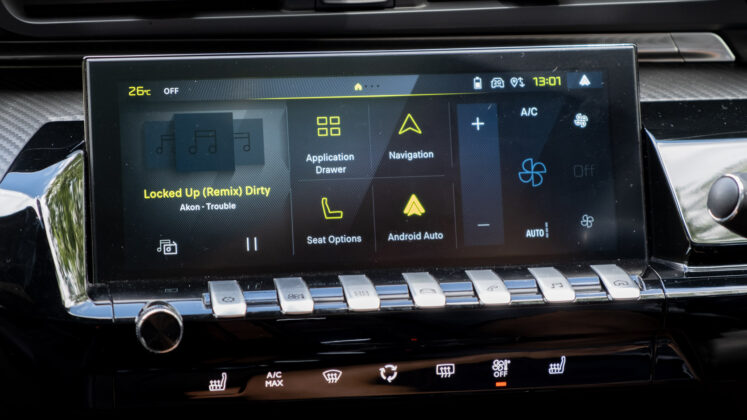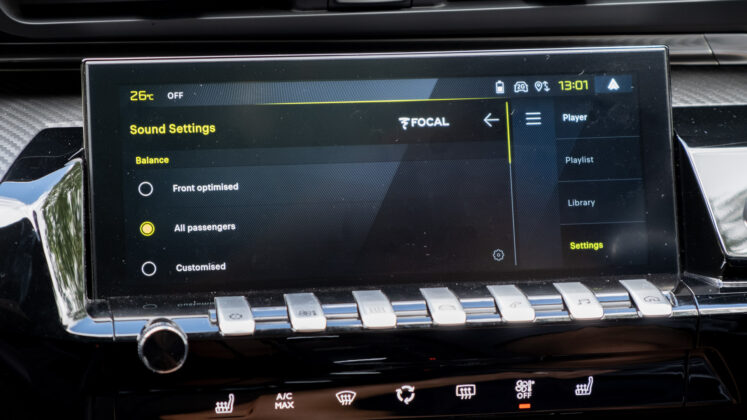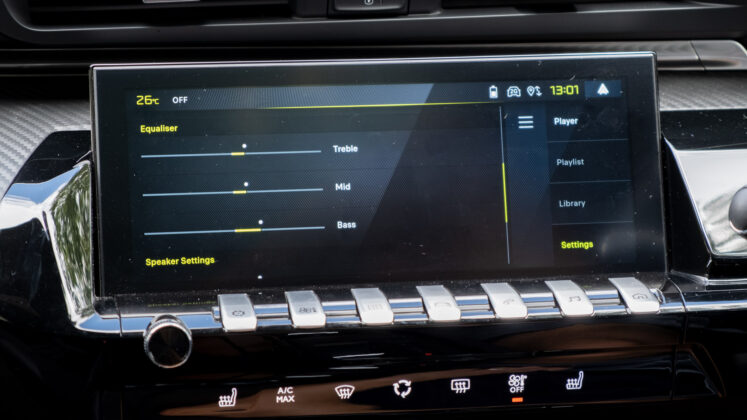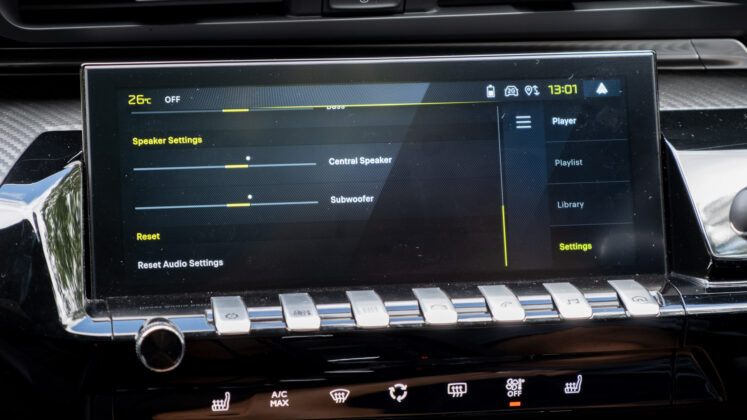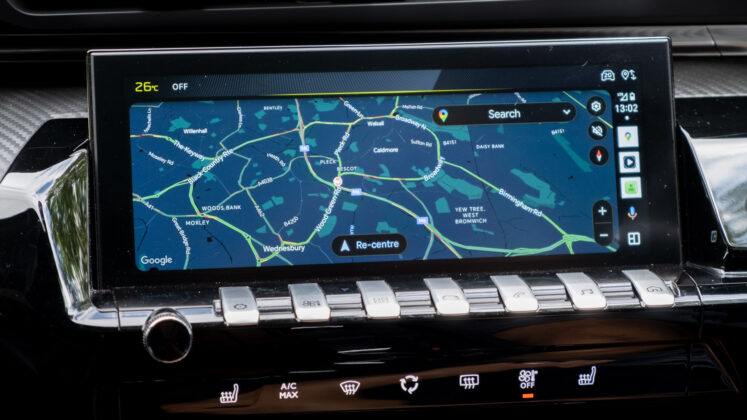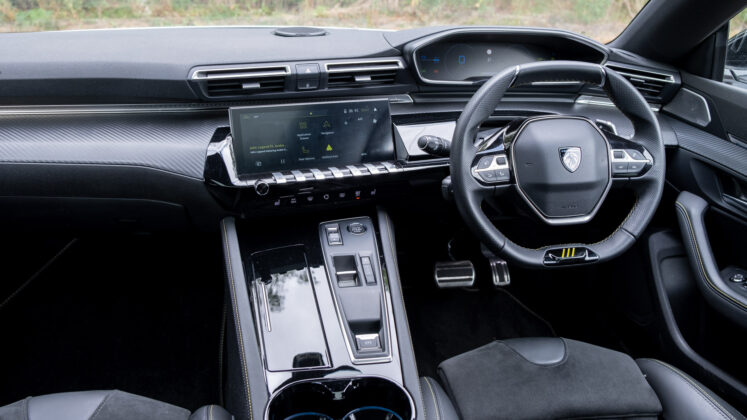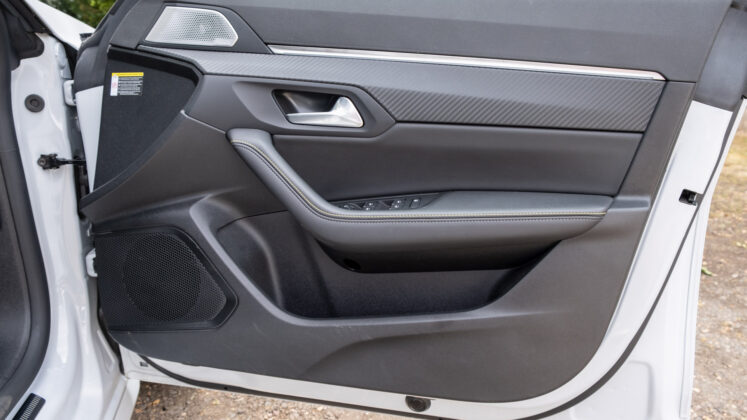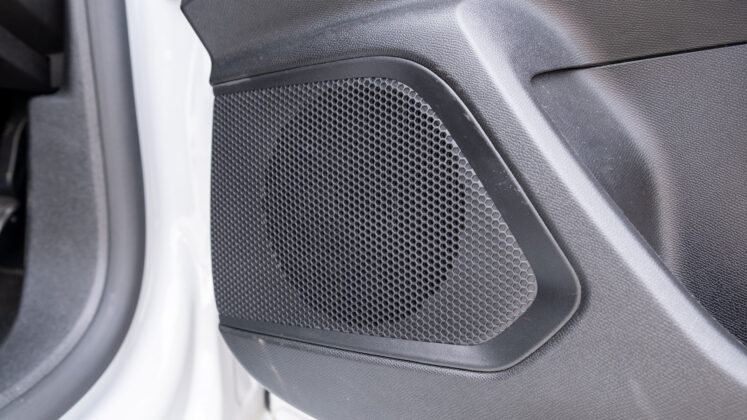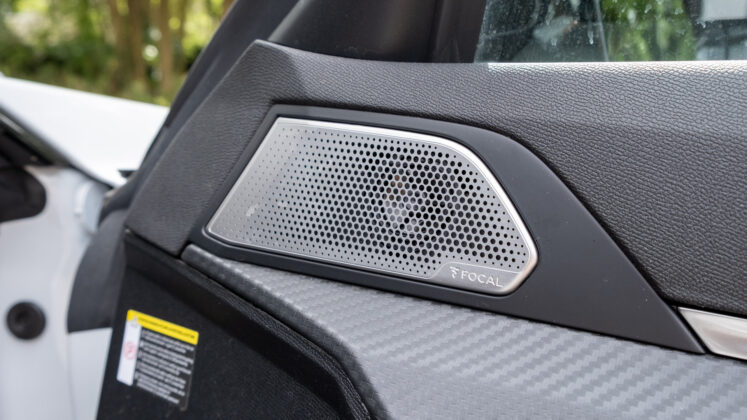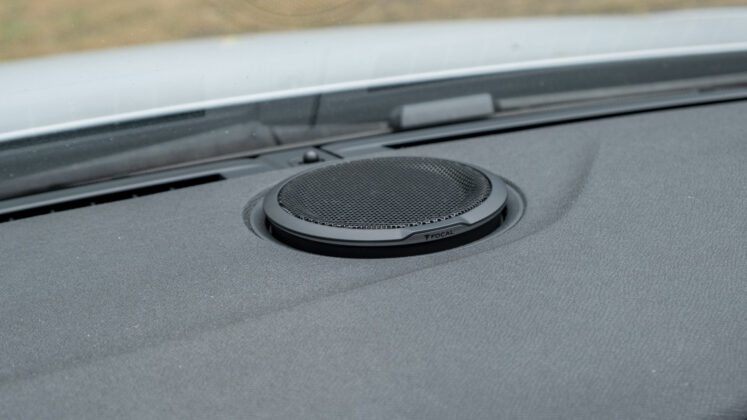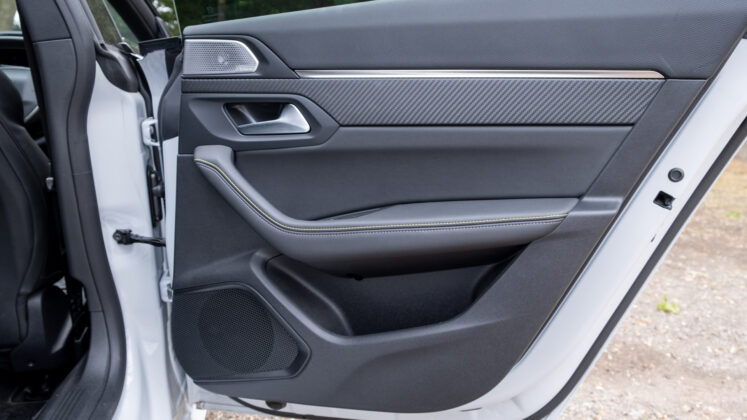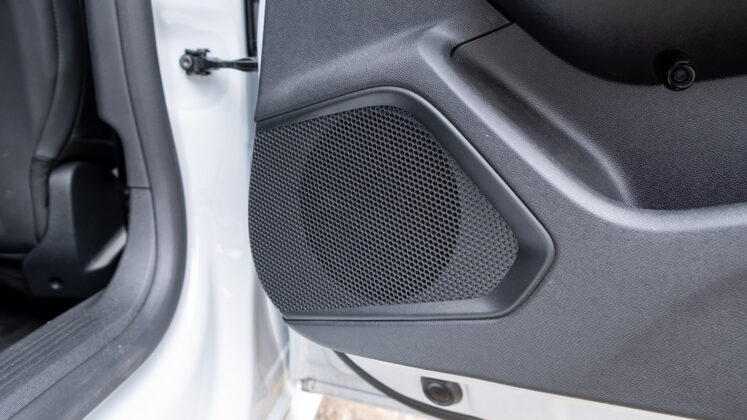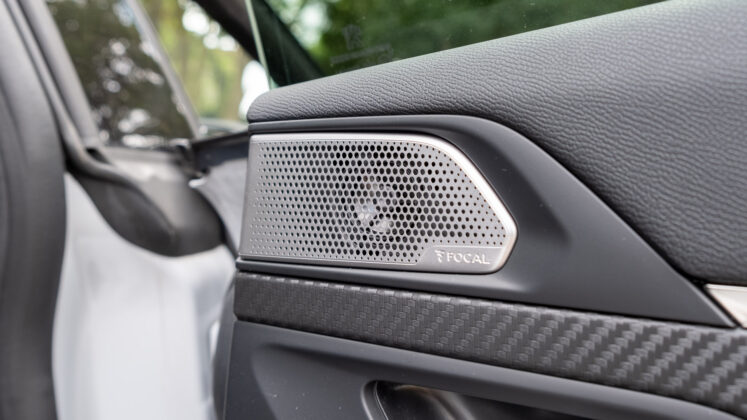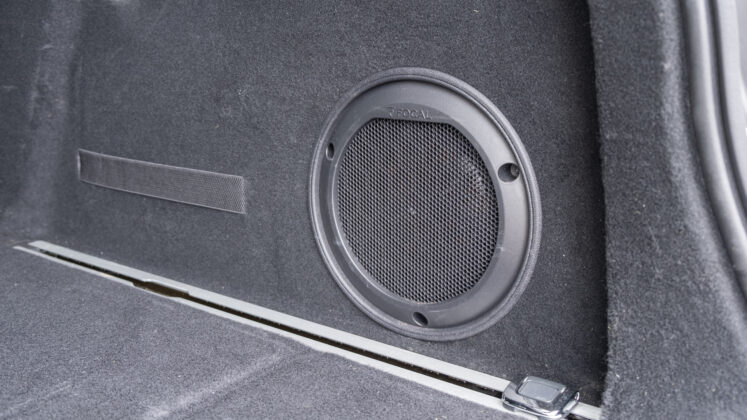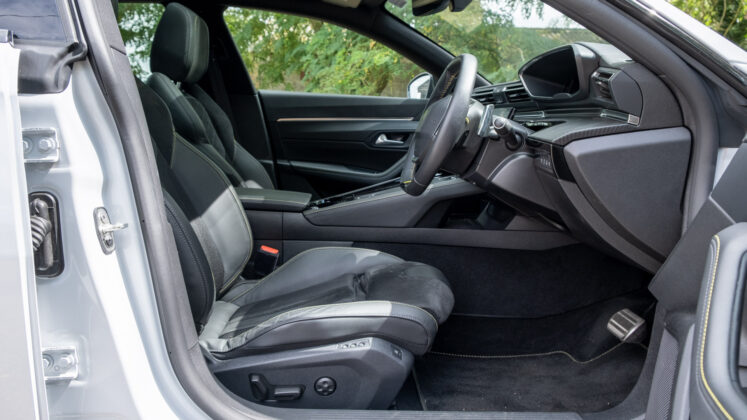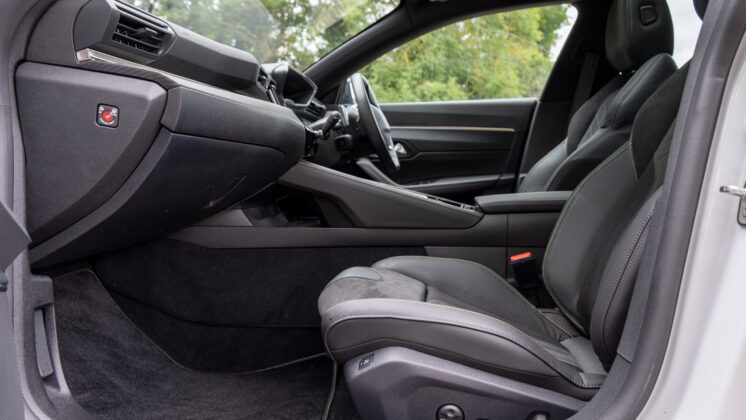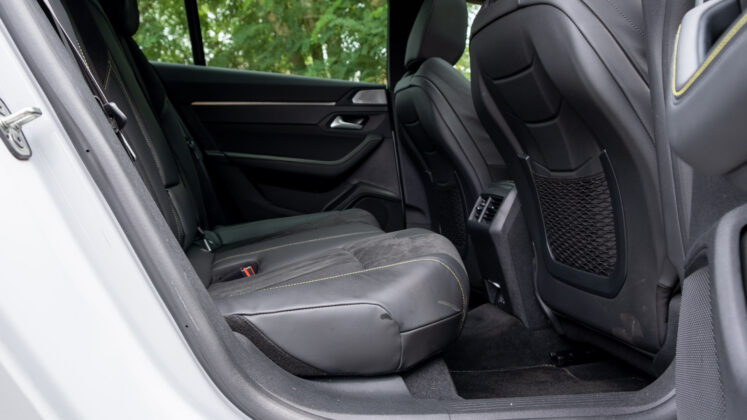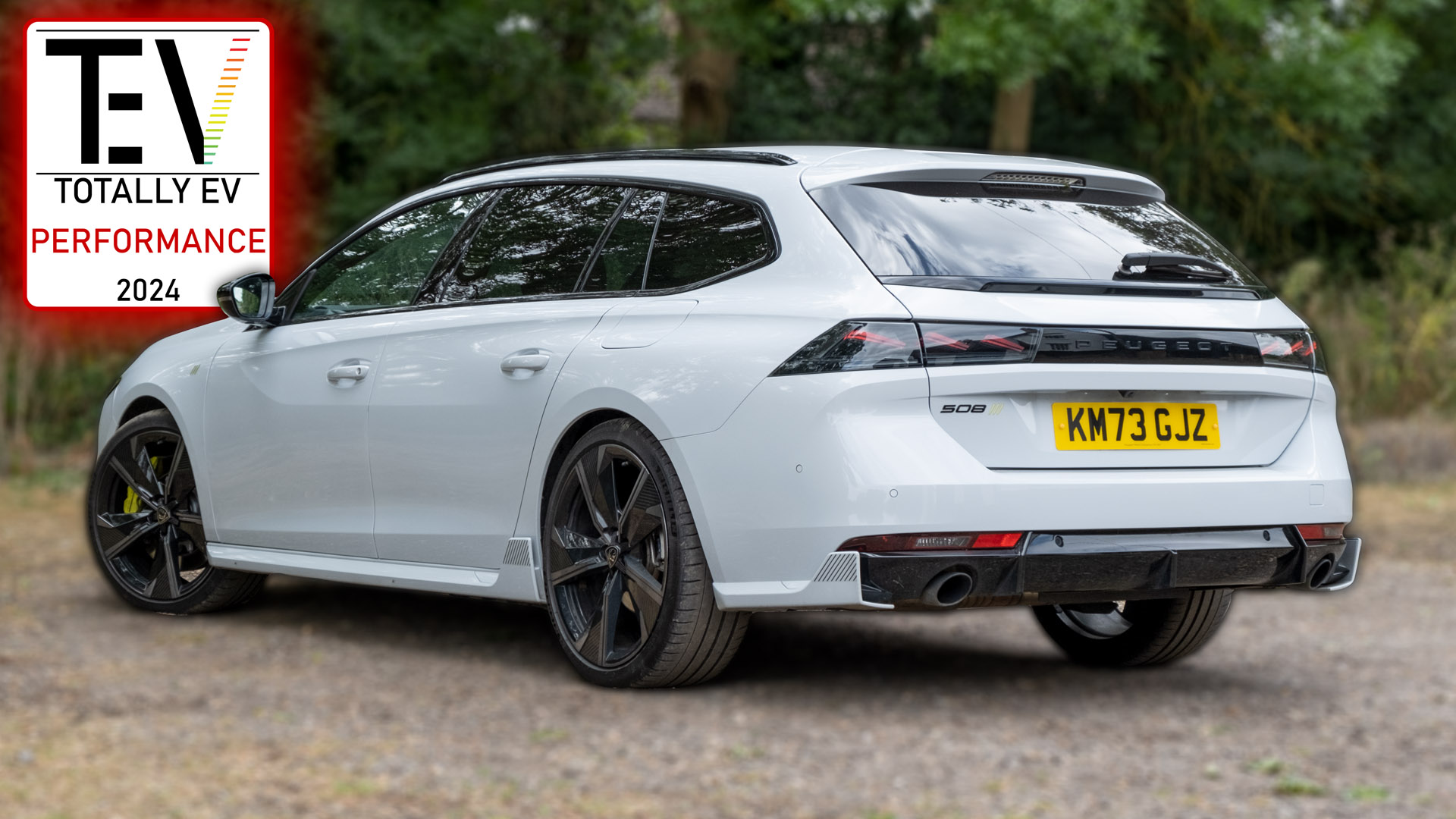The Peugeot 508 is a stylish, efficient and sporty hybrid vehicle that’s available as both a fastback and an estate. While it ticks a lot of boxes, its asking price which starts from £44,990 is hard to ignore, therefore making it hard to outright recommend over rival alternatives.
In terms of its audio configuration, the Peugeot 508 houses eight speakers in the Allure and GT trims. If, however, you want to up the ante, you might want to opt for the top-spec PSE model or add a £900 option on the GT trim to get the upgraded 10-speaker Focal system – the latter being on review.
Click here to read the full Peugeot 508 review
Peugeot 508 audio setup
To tinker with the vehicle’s audio settings, you’ll have to navigate to the appropriate menu on the 10″ infotainment system – here are our optimal settings for the Focal system:
- Balance: All passengers
- Treble: +1
- Mid: +1
- Bass: +2
- Centre Speaker: +1
- Subwoofer: +1
In order to connect to the vehicle’s system, Apple CarPlay and Android Auto are both supported over a wired and wireless connection. Of course, Bluetooth is also an option with the SBC codec supported only, which is rather disappointing as most also support the slightly higher-quality AAC codec. Nonetheless, we’d always suggest plugging in your smartphone to attain the best audio fidelity.
Moving onto media controls, they can be accessed through the display, via the volume knob found just below and through the physical buttons located on the steering wheel.
Read next: Skoda Octavia iV Estate audio review: Worth upgrading to the Canton system?
Peugeot 508 audio performance
For a demo of the Peugeot 508’s audio system head on over to our YouTube channel.
In terms of its audio configuration, the stock eight-speaker system houses a woofer and a tweeter in each of the four doors. The Focal system adds a centre speaker and a sideward-firing subwoofer in the boot – total wattage is rated at 690 Watts. Diving into a bit more detail, in the upgraded configuration the 165mm midrange/woofers door speakers and centre speaker within the dashboard have a Polyglass Cone technology, the TNF tweeters within each of the rear doors have an inverted aluminium cone design and the 20cm subwoofer in the boot has a triple voice coil Power Flower design.
Despite its rather funny name, the included subwoofer certainly bolsters the vehicle’s sub-bass response; songs that have a pronounced low-end rumble come to life, especially with one to two notches added onto the ‘Subwoofer’ EQ. While it’s not quite up there with more premium systems that offer an even better lower-end extension, it’s still a notable upgrade over the stock configuration that omits a subwoofer altogether.
As for the mid-bass tones, they’re almost flawless – both in quality and quantity. With two notches added to the ‘Bass’ EQ, Tommy Richman’s ‘Million Dollar Baby’ has a real punch to it. Your head will be bobbing to the beat. The only way that it could have been improved, would have been for dedicated woofers to be mounted within each of the four doors.
Instead, the French audio manufacturer has chosen to combine the larger door speaker and turn it into a midrange/woofer. Unsurprisingly, this affects mid-range clarity, with the lower mids sounding predominantly pushed back and recessed. Should you tinker too much with the ‘Mid’ EQ, you’ll find the system produces a somewhat artificial sound; as a result, you’ll want to be mindful of how much you add to this frequency band in order not to alter vocal accuracy. Make no mistake, it’s still pretty competent in the mid-range tones, it’s just not got that class-leading reproduction that you might come to expect from a premium system.
Read next: The best dash cams to mount inside your vehicle
As for the highs, they extend well at the top end, with plenty of zing coming through via the dedicated tweeters which are positioned within each of the four doors. Both front and rear occupants will be treated to that toe-tapping feeling.
This also has a positive impact on instrument separation, with songs such as ‘Say Something (Chill Out Version)’ by Karen Harding coming to full fruition. However, the overall width and the depth of the system do let it down – there simply isn’t that level of engagement or cabin-filling sound as one might expect from the upgraded audio configuration. Make no mistake, however, it’s better than the stock eight-speaker system thanks to the inclusion of the centre audio driver that’s positioned within the dashboard.
Finally, onto cabin noise, the Peugeot 508 is a little disappointing in its ability to insulate exterior environment noise. This could be because we had the 508 SW PSE model on review, which comes with larger 20″ alloys that have a thinner tyre wall – the GT has 18″ alloys while the Allure comes with 17″ rims. Nonetheless, using a sound meter in the tested vehicle, we recorded 35-36 dBA at a standstill; 59-63 dBA at 20mph; 63-66 dBA at 30-40mph; and 71-75 dBA at 70mph.
Read next: Citroen C5 X audio review: Best soundproofing?
TotallyEV’s verdict on the Peugeot 508’s audio system
The Focal system within the Peugeot 508 isn’t faultless, as it lacks dynamism and a wide soundstage reproduction. However, it does perform valiantly across the sound frequency range and is a worthwhile upgrade for those who want a bit more oomph over the stock eight-speaker configuration. As such, the upgraded system receives TotallyEV’s Performance audio award.
Find the best Peugeot 508 deals
Would you upgrade to the PSE or GT trims for the upgraded Focal system? Let us know in the comments section below or via social media; we’re on: YouTube, Instagram, Facebook, X and LinkedIn.

